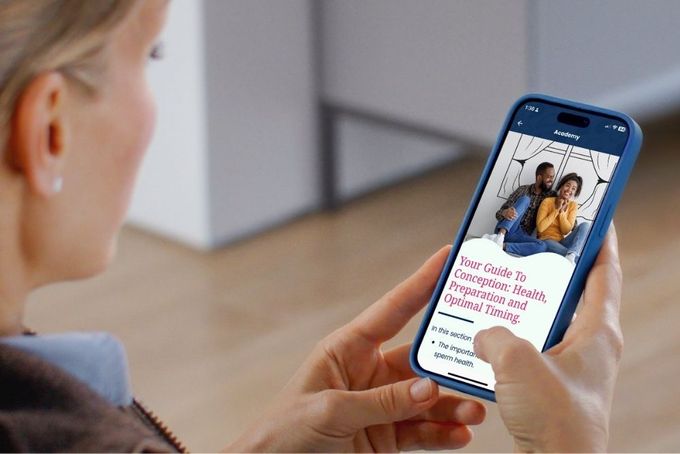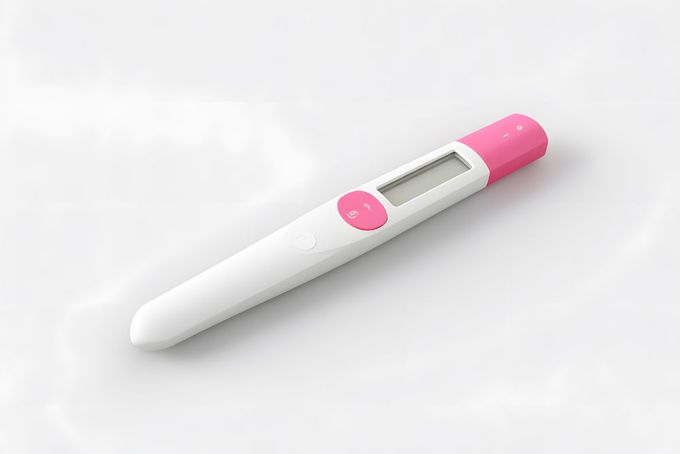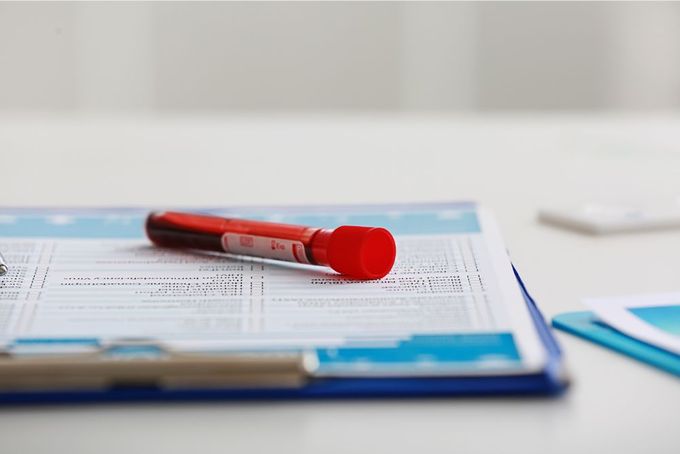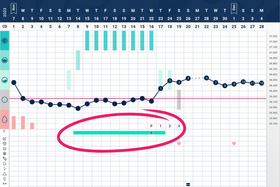Top 12 Proven Tools to Help You Get Pregnant Faster (Backed by Science + Real Life)
Updated September 17, 2025

Trying to conceive (TTC) isn’t always as simple as ditching birth control and crossing your fingers. Whether you’re just getting started or you’ve been at it a while, having the right tools and information can make a world of difference.
When I started my TTC journey, I already understood my cycle well. I’d been using fertility awareness for a number of years to avoid pregnancy, and I had been working with a practitioner for 12 months before trying to conceive to improve my overall health. That included:
A full set of blood tests
Nutritional support
Hormone analysis
to get my body into a healthy, balanced place.
All of that preparation, combined with the knowledge I had about my fertile signs, made me feel empowered, not anxious. I knew:
When my fertile window was
When I could confirm ovulation had happened
If and when to test for pregnancy
How to be in tune with my body
I ended up getting pregnant within just three cycles. These tools and resources played a huge part in that, and I’m sharing them here in case they help you too.
📊 Stat you should know: The number one key to conception is identifying ovulation. Yet, an estimated 50% of couples don’t know when during their cycle they should be trying to get pregnant, which results in poorly timed intercourse.
1. Tempdrop’s Fertility Tracker
Why it helps: Tempdrop is a wearable sensor that tracks your basal body temperature (BBT) overnight, even if your sleep schedule is inconsistent. This helps you identify ovulation with accuracy, minus the stress of early morning thermometers.
Personal note: I love not having to wake up at the same time every day, whilst still getting a usable BBT reading each day. Tracking felt sustainable and stress-free. PLUS, I plan to use Tempdrop during the postpartum phase to help me identify my return to fertility.
Best for: Women with irregular routines and sleep patterns, shift workers, or anyone wanting accurate, hassle-free BBT tracking.
Learn more: Tempdrop Official Website
2. “It Starts With The Egg” by Rebecca Fett
Why it helps: This book is science-heavy but super informative on how to improve egg quality and minimize environmental toxins. A TTC must-read for those with fertility struggles or just wanting to take control.
Topics include: supplements, PCOS, egg freezing, and more.
Personal note: It helped me reduce unnecessary exposure to hormone-disrupting chemicals and deeply understand the changes and impacts I could make for better egg health, ready for when we decided to conceive.
Buy it: Available on Amazon
3. Tempdrop’s Conceive with Confidence E-book
Why it helps: This free e-book breaks down cycle health, hormone basics, and key TTC strategies in a friendly, non-intimidating format. It’s written by experts across different fields to provide you with a holistic approach.
Personal note: If the “It Starts With The Egg” book feels a bit too overwhelming or you’re struggling to find the time to get through all the material, the Conceive with Confidence eBook is a great option for quick summaries and pointers to help you improve your hormone health and fertility. PLUS, the recipes included at the end of the book are simple and tasty.
Download: Available free via the Tempdrop app or website.
3. Tempdrop Academy: Lesson 6. Your Guide To Conception: Health, Preparation, and Optimal Timing
Why it helps: This lesson walks you through the importance of egg AND sperm health, how to prepare for a healthy pregnancy, and how to determine the optimal time in your cycle to try to conceive.
Where to find it: Inside the Tempdrop app under “Learning Center”. Everyone gets two months of free access to the Academy when they download the Tempdrop app. If more time is needed to complete the 10-part course, you can opt into Tempdrop’s premium service, which also includes sleep tracking and personalized insights.
5. Ovulation Predictor Kits (OPKs)
Why it helps: These tests detect your luteinizing hormone (LH) surge, helping you pinpoint ovulation. When used alongside BBT tracking, they add an extra layer of confirmation.
Tip: Look for digital readers or budget-friendly strip bundles.
Personal note: I used OPKs and Progesterone tests, alongside Tempdrop, a few months before starting our TTC journey. I personally didn't feel the OPKs and progesterone tests helped me understand my fertile window any better than I already did, but I know many women like the extra data and confidence they provide - especially when first starting out with fertility tracking - this is really a personal thing to decide whether to include them or not.
6. A High-Quality Prenatal Vitamin
Why it helps: Starting a prenatal supplement before conception builds up nutrients essential for pregnancy, especially folate, choline, and vitamin D.
Popular brands: Thorne, Needed, MegaFood.
Personal note: I started my prenatal vitamins around 6 months before TTC, but before that, I was taking specific supplements based on blood analysis to improve my health. I recommend speaking to your practitioner about which prenatal (or set of supplements) you should take. I found working with a practitioner who was ‘on board’ with fertility tracking super useful - she was open to using the data I was collecting every cycle, and I found it easier to communicate my symptoms.
7. A Charting App (or Paper) You’ll Actually Use
Why it helps: You need somewhere to record your temp, cervical mucus, and OPK results. You can chart your temps automatically with Tempdrop and also add other key information to help you identify your fertile window. There are also popular apps like Read Your Body, Ovuview and ChartNeo.
Personal note: I used the Tempdrop charting app so everything was in one place, but Read Your Body is highly customisable and I know it’s a ‘go-to’ for more experienced charters.
You can also get free downloadable paper charts online. A great option if you’re someone who prefers to chart ‘offline’.
8. Cervical Mucus Awareness
Why it helps: Your body tells you when you're fertile! Learning to recognize fertile-quality cervical mucus is one of the most accurate signs of approaching ovulation, in real-time.
Personal note: This helped me understand when to time intercourse for conception, but also when my fertile window was closed. This also helped me calculate when to expect my period, OR when it was time to test.
Learn more: Why not take a course or partner with a fertility awareness expert to learn about how to accurately observe and record this key body sign..
9. A Support System (Online or IRL)
Why it helps: TTC can feel isolating. A fertility coach, a trusted friend, or a private Facebook group can provide emotional support, tips, and community.
Try: Reddit’s r/TryingForABaby, Tempdrop FB group, or a fertility-focused Instagram account you trust.
10. Prioritizing Sleep
Why it helps: Poor sleep and chronic stress can throw your hormones out of balance. Irregular or poor-quality sleep can lead to cortisol imbalances and disrupt the delicate hormonal rhythm needed for conception.
Bonus tools: Calm app, magnesium-rich snacks, nighttime rituals like a gentle walk after dinner, warm baths, or screen-free wind-down time.
Personal note: Prioritising sleep made a real difference to my energy levels and overall wellbeing. I also found that taking a gentle walk after dinner helped me wind down. It became a small but meaningful routine whenever I got the chance— a way to process the day and spend some quality time with my husband.
11. Supportive Exercise Routine
Why it helps: Regular, gentle exercise supports circulation, reduces stress, and helps regulate insulin and other hormones. Overtraining can negatively impact fertility, but balanced movement can boost overall wellness.
Try: Walking, Pilates, strength training, and stretching.
Personal note: It took a while for me to find a good routine and exercise classes that I actually enjoyed (trust me, it did not come easy!), but when I did, I found it made me feel more energised and even more focused at work during the day. I tried not to focus on aiming for weight loss or intensity, but rather just enjoying it. I also teamed up with a couple of friends for extra motivation, and I found it so much easier to stick to my set routine.
12. Comprehensive Blood Work & Health Assessment
Why it helps: A full panel of blood tests—checking thyroid function, vitamin D, B12, iron/ferritin, sex hormones, and more—can uncover imbalances that might delay conception. Doing this before TTC gives you time to correct anything that’s off.
What to ask for: Full thyroid panel (TSH, Free T3, Free T4, antibodies), serum vitamin D, ferritin, cortisol, cholesterol, estradiol, FSH, progesterone (7 days post-ovulation), and more.
Personal note: Working with a practitioner to test and review my blood work gave me such peace of mind. We adjusted my supplements and made dietary tweaks well ahead of TTC—and I truly believe it made a huge impact.
Final Thoughts: Getting pregnant isn’t always instant; it took work over many months before we tried to conceive. But having the right information and tools makes a huge difference. These were the resources I used and recommend to help me go from "just starting" to "two pink lines" in just a few months. I hope that they can help you, too!













